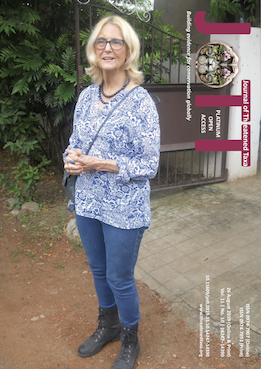Aquilaria malaccensis (Malvales: Thymelaeaceae): a new host plant record for Deudorix epijarbas cinnabarus (Lepidoptera: Lycaenidae) in Malaysia
DOI:
https://doi.org/10.11609/jott.4845.11.10.14385-14387Keywords:
Aquilaria malaccensis, Deudorix epijarbas cinnabarus, host plant, MalaysiaAbstract
Aquilaria malaccensis Lam., a highly threatened and one of the most sought-after agarwood producing species listed in the Appendix II of CITES, is reported here as the new host plant for Deudorix epijarbascinnabarus in Malaysia.
References
Asian Regional Workshop (Conservation & Sustainable Management of Trees, Viet Nam, August 1996). (1998). Aquilaria malaccensis. The IUCN Red List of Threatened Species 1998: e.T32056A9677920. DOI: https://doi.org/10.2305/IUCN.UK.1998.RLTS.T32056A9677920.en
Balakrishnan, V., P. Churi & K. Saji (2019). Deudorix epijarbas (Moore, [1858])–Cornelian¡. In: Kunte, K., S. Sondhi, & P. Roy (Chief Editors). Butterflies of India, v. 2.59. Indian Foundation for Butterflies. Accessed: 17 Jan 2019.
http://www.ifoundbutterflies.org/sp/572/Deudorix-epijarbas
Barden, A., N. Awang Anak, T. Mulliken & M. Song (2000). Heart of the matter: Agarwood use and trade and CITES implementation for Aquilaria malaccensis. Cambridge, UK: TRAFFIC International.
CABI (2019 ). Nephelium lappaceum. In: Invasive Species Compendium. Wallingford, UK: CAB International. Accessed: 17 Jan 2019.
Chang, Y.S., M.A. Nor Azah & A.A. Said (2001). Gaharu: A prized incense from Malaysia. Malaysian Oil Science and Technology 9(2): 26−27.
CITES Trade Database (2019). Gross exports report of Aquilaria malaccensis for 2017. Downloaded on 29 July 2019. https://trade.cites.org
DAFF (Department of Agriculture, Fisheries and Forestry) (2004). Longan and lychee fruit from the People’s Republic of China and Thailand. Final Import Risk Analysis Report. Part B, Longan and Lychee Fruit from China and Thailand, 176pp. http://www.agriculture.gov.au/SiteCollectionDocuments/ba/memos/2004/plant/ll_finalb.pdf
Ding, H. (1960). Thymelaeaceae. In: van Steenis, C.G.G.J. (ed). Flora malesiana series I. Groningen, the Netherlands: Wolters-Noordhoff Publishing 6: 1−15. https://doi.org/10.2305/IUCN.UK.2018-1.RLTS.T32056A2810130.en
Dubey, J.K., A. Nath & J.R. Thakur (1993). Chemical control of pomegranate fruit borer(s), Virachola isocrates (Fabr.) and Deudorix epijarbas (Moore). Indian Forester 119(11): 928–931.
Harvey-Brown, Y. (2018). Aquilaria malaccensis. The IUCN Red List of Threatened Species 2018: e.T32056A2810130. https://doi.org/10.2305/IUCN.UK.2018-1.RLTS.T32056A2810130.en Downloaded on 16 October 2018.
Jayachandran, K., I. Sekar, K.T. Parthiban, D. Amirtham & K.K. Suresh (2014). Analysis of different grades of Agarwood (Aquilaria malaccensis Lamk.) oil through GC-MS. Indian Journal of Natural Products and Resources 5(1): 44‒47.
Kirton, L.G. (2014). A Naturalist’s Guide to the Butterflies of Peninsular Malaysia, Singapore and Thailand. John Beaufoy Publishing Limited, Oxford, 176 pp.
Nor Azah, M.A., Y.S. Chang, J. Mailina, A.A. Said, J.A. Majid, S.S. Husni, H.N. Hasnida & Y.N. Yasmin (2008). Comparison of chemical profiles of selected Gaharu oils from Peninsular Malaysia. The Malaysian Journal of Analytical Sciences 12(2): 338‒340.
Ong, S.P. & K.H. Lau (2016). Aquilaria malaccensis fruit borer in Peninsular Malaysia. Current Science 110(4): 504−505. https://www.researchgate.net/publication/298715777_Aquilaria_malaccensis_fruit_borer_in_Peninsular_Malaysia
Robinson, G.S., P.R. Ackery, I.J. Kitching, G.W. Beccaloni & L.M. Hernández (2010). HOSTS–A Database of the World’s Lepidopteran Hostplants. Natural History Museum, London. Accessed on 17 Jan 2019. http://www.nhm.ac.uk/hosts
Tawan, C.S. (2004). Thymelaeaceae, pp. 433‒484. In: Soepadmo, E., L.G. Saw & R.C.K. Chung (eds.). Tree Flora of Sabah and Sarawak, Vol. 5. Forest Research Institute Malaysia, 528pp.
Published
Issue
Section
License
Authors own the copyright to the articles published in JoTT. This is indicated explicitly in each publication. The authors grant permission to the publisher Wildlife Information Liaison Development (WILD) Society to publish the article in the Journal of Threatened Taxa. The authors recognize WILD as the original publisher, and to sell hard copies of the Journal and article to any buyer. JoTT is registered under the Creative Commons Attribution 4.0 International License (CC BY), which allows authors to retain copyright ownership. Under this license the authors allow anyone to download, cite, use the data, modify, reprint, copy and distribute provided the authors and source of publication are credited through appropriate citations (e.g., Son et al. (2016). Bats (Mammalia: Chiroptera) of the southeastern Truong Son Mountains, Quang Ngai Province, Vietnam. Journal of Threatened Taxa 8(7): 8953–8969. https://doi.org/10.11609/jott.2785.8.7.8953-8969). Users of the data do not require specific permission from the authors or the publisher.





